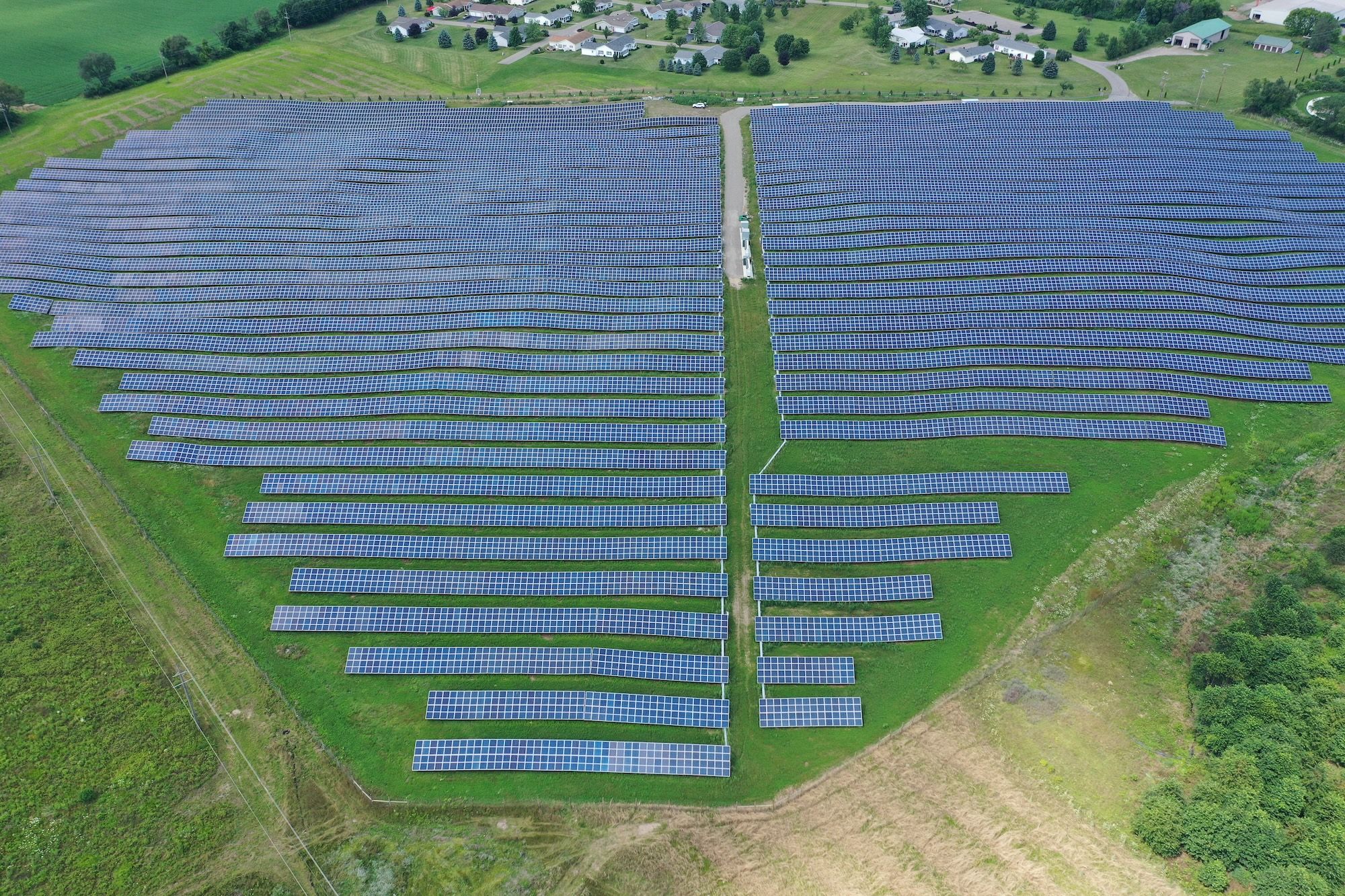Wall Street Is Turning Climate Finance Into an Energy Security Pitch – The Business Download |

Report on Shifting Financial Sector Priorities and Implications for Sustainable Development Goals
Executive Summary
- A significant shift in the framing of climate finance was observed during New York climate week, with financial institutions moving away from explicit decarbonization language.
- The new emphasis is on “energy security” and financing the energy requirements for artificial intelligence (AI), which has direct implications for Sustainable Development Goals (SDGs), particularly SDG 7, SDG 9, and SDG 13.
- This strategic pivot is influenced by the current political and regulatory environment in the United States, alongside a pragmatic focus on the economic viability of investments.
The Evolving Narrative: From Climate Action to Energy Security
- Bankers are increasingly distancing themselves from the traditional terminology of climate finance.
- Investment narratives that prioritize themes such as “energy security” or “energy for AI” are now considered more likely to secure funding and executive approval.
- The concept of a “green premium” has diminished, with a focus on funding projects that make clear economic sense, signaling a change in how sustainable investments are evaluated.
Implications for SDG 13 (Climate Action) and SDG 7 (Affordable and Clean Energy)
- De-prioritization of Decarbonization: The goal of aligning financial portfolios with the 1.5°C global warming target, a core tenet of SDG 13, is being treated as a lower priority. Banks are less vocal about applying restrictions to fossil fuel financing.
- Complex Outlook for Clean Energy: The focus on overall energy supply creates an ambiguous outlook for the clean energy transition under SDG 7. While much of the new capacity will be low-carbon, the lack of restrictions on fossil fuels complicates progress.
- Economic Case for Renewables: Despite the narrative shift, strong evidence supports the economic viability of clean energy. The International Renewable Energy Agency reports that 91% of new utility-scale renewable projects delivered electricity at a lower cost than the cheapest fossil fuel alternatives, reinforcing the economic argument for achieving SDG 7.
The Nexus of Innovation, Infrastructure, and Economic Growth (SDGs 8, 9)
- SDG 9 (Industry, Innovation, and Infrastructure): The projected quadrupling of electricity demand from AI data centers is a major driver for new energy infrastructure investment. The current U.S. administration’s preference for nuclear and geothermal power is also shaping investment in low-carbon infrastructure.
- SDG 8 (Decent Work and Economic Growth): The financial sector’s focus on funding economically sound projects that support high-growth sectors like AI directly aligns with the economic growth component of SDG 8.
Political and Regulatory Influences on Sustainable Finance (SDG 16)
- The U.S. political climate has made explicit “climate finance” branding a risky undertaking for financial institutions.
- The “Guaranteeing Fair Banking for All Americans” executive order is a key concern, with banks interpreting it as a potential measure to prevent the withholding of capital from the fossil-fuel industry.
- This regulatory pressure challenges the ability of financial institutions to independently set climate-aligned policies, impacting the role of strong institutions (SDG 16) in advancing sustainable development.
A Renewed Focus on Physical Risk and Resilience (SDGs 9, 11, 13)
- Asset Protection and Resilience: There is a growing awareness among investors of the need to protect assets from the physical impacts of climate change, a critical component of climate resilience under SDG 13.
- Vulnerable Infrastructure: Asset classes such as real estate and infrastructure, central to SDG 9 (Industry, Innovation, and Infrastructure) and SDG 11 (Sustainable Cities and Communities), are increasingly recognized as vulnerable to extreme weather events. This is leading to more rigorous climate-related due diligence in investment decisions.
- Shift from Compliance to Profit: The motivation for considering climate factors is evolving from reputation management to a core assessment of financial risk, profit, and resilience, as the potential economic losses from global warming are deemed too significant to ignore.
Conclusion: A Pragmatic Reset in Sustainable Finance
- The finance industry is undergoing a “reset,” shifting from public declarations to developing deep, actionable strategies to achieve climate and energy goals.
- While the public framing has changed due to political pressures, the underlying financial risks of climate change and the economic opportunities in clean energy (SDG 7) continue to be powerful drivers of decision-making.
- The long-term investment case for climate-related opportunities remains robust, suggesting that the industry’s focus on profit and resilience will continue to align with key aspects of the Sustainable Development Goals.
Analysis of Sustainable Development Goals in the Article
1. Which SDGs are addressed or connected to the issues highlighted in the article?
-
SDG 7: Affordable and Clean Energy
The article is fundamentally about financing energy. It discusses the shift in focus towards ensuring a vast supply of energy for AI and overall energy security. It explicitly mentions various energy sources, including low-carbon options like renewables, nuclear, and geothermal power, directly aligning with the goal of ensuring access to affordable, reliable, sustainable, and modern energy.
-
SDG 9: Industry, Innovation and Infrastructure
The need to power the growth of artificial intelligence (AI) is a central theme, highlighting the link between energy, innovation, and industry. The article also mentions financing infrastructure and the growing importance of assessing the vulnerability of infrastructure assets to climate change, which connects to building resilient infrastructure.
-
SDG 13: Climate Action
Although the article notes that bankers are moving away from the “climate finance” label, the entire discussion is framed by the context of climate change. It references the previous goal of aligning portfolios with the 1.5C warming limit, the need to decarbonize loan books, and the physical risks of climate change (extreme weather events) impacting assets. The political backlash against green policies described is a direct challenge to taking urgent climate action.
-
SDG 11: Sustainable Cities and Communities
The article touches upon this goal by highlighting the risks climate change poses to physical assets. It states that private equity firms are increasingly conducting due diligence on how extreme weather events affect real estate and infrastructure, which is a key consideration for making cities and human settlements inclusive, safe, resilient, and sustainable.
-
SDG 17: Partnerships for the Goals
The article focuses on the role of the private financial sector—including banks, asset managers, and private equity firms—in financing the energy transition. It describes how these institutions are navigating political pressure and economic realities, illustrating the complex dynamics of mobilizing financial resources for sustainable development.
2. What specific targets under those SDGs can be identified based on the article’s content?
-
SDG 7: Affordable and Clean Energy
- Target 7.2: By 2030, increase substantially the share of renewable energy in the global energy mix. The article supports this by noting that “the cheapest way to power AI is through renewable energy” and citing an International Renewable Energy Agency report that “91% of all newly commissioned utility-scale renewable projects delivered electricity last year at a lower cost than the cheapest new fossil fuel-powered alternative.”
- Target 7.a: By 2030, enhance international cooperation to facilitate access to clean energy research and technology… and promote investment in energy infrastructure and clean energy technology. The article’s core subject is the financing of energy supply, including “low-carbon” options like nuclear and geothermal power, which directly relates to promoting investment in clean energy infrastructure and technology.
-
SDG 9: Industry, Innovation and Infrastructure
- Target 9.1: Develop quality, reliable, sustainable and resilient infrastructure… to support economic development and human well-being. The article mentions that investors are aware they “need to protect assets from the physical fallout of climate change” and that “Asset classes seen as particularly vulnerable to valuation adjustments as a result of extreme weather events include real estate and infrastructure.” This points directly to the need for resilient infrastructure.
- Target 9.4: By 2030, upgrade infrastructure and retrofit industries to make them sustainable, with increased resource-use efficiency and greater adoption of clean and environmentally sound technologies. The discussion around financing the massive energy supply for AI with low-carbon and renewable sources is an example of upgrading infrastructure to support a new, resource-intensive industry in a more sustainable way.
-
SDG 13: Climate Action
- Target 13.2: Integrate climate change measures into national policies, strategies and planning. The article illustrates a conflict with this target, describing how the “Guaranteeing Fair Banking for All Americans” executive order is being interpreted as a potential lever “to ensure capital isn’t withheld from the fossil-fuel sector,” which runs counter to integrating climate mitigation into policy. Conversely, it also notes that companies are now “doing the deep strategy to try and figure out” how to deliver on their climate goals, which is a form of corporate integration.
- Target 13.a: Implement the commitment undertaken by developed-country parties… to a goal of mobilizing jointly $100 billion annually by 2020 from all sources to address the needs of developing countries… and fully operationalize the Green Climate Fund. While not mentioning the specific fund or amount, the article is entirely about the mobilization of private finance for energy and climate-related investments. It discusses the actions of banks and asset managers who previously signed up to “net zero alliances,” which are part of this broader global financial commitment.
3. Are there any indicators mentioned or implied in the article that can be used to measure progress towards the identified targets?
- Cost-Competitiveness of Renewables: The article provides a specific data point that can serve as an indicator for Target 7.2. It cites the International Renewable Energy Agency, stating that “91% of all newly commissioned utility-scale renewable projects delivered electricity last year at a lower cost than the cheapest new fossil fuel-powered alternative.” This percentage is a direct measure of the economic viability and deployment of renewable energy.
- Projected Financial Savings from Electrification: An indicator for the economic benefits of climate action (related to SDG 13) is mentioned. The article cites a BloombergNEF estimate that “speeding up electrification and adding renewables has the potential to slash $19 trillion from fuel costs by mid-century.” This monetary value serves as a powerful indicator of the long-term financial incentive for transitioning to clean energy.
- Electricity Demand from AI: An indicator for the scale of the challenge under SDG 9 and SDG 7 is the projected growth in energy demand. The article notes that “electricity demand from AI training and services set to quadruple within a decade.” This quantifiable projection helps measure the increasing pressure on energy infrastructure and the need for sustainable solutions.
- Capital Allocation to Energy Sectors (Implied): The article strongly implies that the flow of capital is a key indicator. The concern that the “Fair Banking” executive order may be used to “ensure capital isn’t withheld from the fossil-fuel sector” suggests that tracking financial flows to fossil fuel versus low-carbon energy projects is a critical, albeit unstated, indicator of progress (or lack thereof) towards climate goals.
- Valuation Adjustments of Assets (Implied): The article mentions that asset classes like “real estate and infrastructure” are seen as “vulnerable to valuation adjustments as a result of extreme weather events.” The frequency and magnitude of these adjustments could serve as a financial indicator measuring the real-world economic impact of climate change and the urgency for building resilience (Target 9.1).
4. Summary Table of SDGs, Targets, and Indicators
| SDGs | Targets | Indicators |
|---|---|---|
| SDG 7: Affordable and Clean Energy |
|
|
| SDG 9: Industry, Innovation and Infrastructure |
|
|
| SDG 13: Climate Action |
|
|
Source: thebusinessdownload.com
What is Your Reaction?
 Like
0
Like
0
 Dislike
0
Dislike
0
 Love
0
Love
0
 Funny
0
Funny
0
 Angry
0
Angry
0
 Sad
0
Sad
0
 Wow
0
Wow
0



















































.jpg.webp?itok=0ZsAnae9#)

























